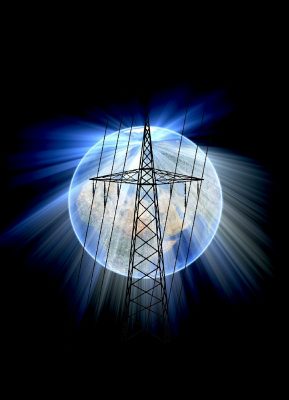By 2030, renewables will be providing three out of five people with new electricity access, says a new global report.
The International Energy Agency (IEA) say that, since 2000, coal and other fossil fuels have been the main energy sources for new electricity access.
However, “renewables are catching up quickly, providing more than a third of new connections in the last five years,” they note.
 The most cost-effective way for developing countries to achieve universal electricity access is “compatible with meeting climate goals,” says a new report. Image: pixabay-407710
The most cost-effective way for developing countries to achieve universal electricity access is “compatible with meeting climate goals,” says a new report. Image: pixabay-407710
‘Political will and cost reductions’
The IEA’s Energy Access 2017 report says that the shift to renewables is likely to continue at a pace.
It suggests that renewables are set to provide 60 percent of new connections by 2030.
In a detailed analysis of 140 countries, the report shows that all regions are showing positive results from efforts to improve electricity access.
“The good news is that a convergence of political will and cost reductions is accelerating progress,” says IEA executive director Dr. Fatih Birol.
The number of people worldwide without electricity fell, for the first time, to below 1.1 billion in 2016. Since 2000, nearly 1.2 billion people have gained access to electricity.
India – the big success story
Asia has shown the most progress, with 870 million people gaining electricity access since 2000. Of those, India accounted for the vast majority – with 500 million gaining access.
The report describes India’s progress as “one of the largest electrification success stories in history.” It says that the country is set to achieve universal electricity access by 2020.
It also highlights a “positive trend” in sub-Saharan Africa, where new electricity access has been rising faster than population growth since 2014.
Nevertheless, a look back over a longer period shows that progress is up and down: sub-Saharan Africa still has more people without electricity today than it had in 2000.
Of the 674 million people likely to still be without electricity access in 2030, the vast majority – 90 percent – are in sub-Saharan Africa.
Energy for all for less than 2 percent of global investment
In 2015, 193 countries of the United Nations signed up to a list of Sustainable Development Goals (SDGs) and actions. Goal number 7 says: “Ensure access to affordable, reliable, sustainable and modern energy for all.”
The IEA report suggests that the most cost-effective way for developing countries to achieve universal electricity access, as well as clean cooking facilities for all, is “compatible with meeting climate goals.”
The report outlines the costs and benefits of such a strategy, and highlights the “central role of energy in meeting human and economic development goals.”
Economic development includes citizen’s growing incomes, better health, longer lifespans, and higher academic levels. Economic development is also about improving infrastructure and access to good housing.
The “Energy for All” case argues that an investment of USD 31 billion per year – which is less that 2 percent of global energy investment – could achieve universal energy access by 2030. Most of the funding would be targeted to sub-Saharan Africa, and most of it would go to renewables.
Less than 10 percent of the total would be needed to provide clean cooking facilities, including liquefied petroleum gas, say the IEA.

